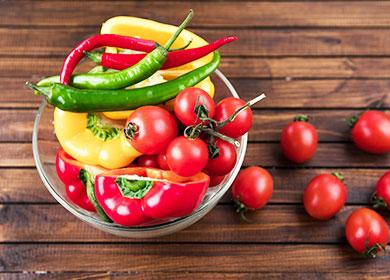The content of the article
Correction of the diet for weight loss is a far from new phenomenon. Even in ancient Greece, medical practices were known that suggested maximizing the amount of meat on the menu and reducing the amount of bread and cereals in order to lose weight. Similar recommendations were observed, for example, by ancient Greek athletes before competitions. And their diet was quite strict, since it completely excluded fruits and vegetables.
The first description of a carbohydrate-free snack on a turbo diet did not belong to Professor Atkins, as is commonly believed. And the English undertaker William Bunting, who, thanks to the advice of the doctor William Harvey, managed to lose twenty-one kilograms. With a growth of one hundred and sixty-five centimeters, Bunting weighed more than ninety kilograms, which created discomfort and health problems.
Undertaker, on the recommendation of Dr. Harvey, stopped drinking beer, refused potatoes and sweets, began to eat significantly more meat and fish. Losing weight with virtually no food restrictions impressed Bunting so much that he decided to tell his compatriots about it. In 1864, he published a book on weight loss in meat and fish, which was reprinted several times. Its total circulation amounted to one hundred thousand copies unthinkable for its time.
Features of a low-carb diet
Modern descriptions of a protein-based nutrition system come out in much more impressive print runs. The books of Dr. Atkins, Ducan, recommendations for following the Kremlin diet have been published and continue to be published in millions of copies.

Principles
Combines all power systems with several basic principles. Diet example
- The basis of the diet is protein. Its content in products reaches eighty percent. Maintained a high fat content in the menu. The rationale for such a diet is that it is protein that is the building material for body cells. It is of paramount importance for athletes, since it is from protein products that the body synthesizes the amino acids necessary for muscle growth. Fats are a “side effect” of protein nutrition, as all products of animal origin contain one or another amount of lipids.
- Carbohydrates are limited in use. Carbohydrates are attributed by the authors of diets to nutrition components that stimulate the formation of fat masses. Firstly, the use of many of them, for example, simple sugar or flour products, causes a sharp jump in insulin in the blood. This, in turn, leads to the production of glucose, which must be spent somewhere. With a sedentary lifestyle, glucose costs are low, so its excess is transformed into fat masses. Secondly, insulin jumps themselves provoke an appetite when the need to eat something is ahead of the need for food, as such. In the menu of a carbohydrate-free diet, carbohydrates are limited to a minimum of 50-150 grams per day or not more than 250 Kcal per carbohydrate products.
- The diet is highly motivated. That is, it really works, and the losing weight sees the result literally from the first days of observing the new diet. This inspires optimism, makes us believe that the fight against excess weight is possible. This is especially important for people who have already tried various diets before and have not achieved results.
- Food is not hungry. The obvious advantage of the menu for every day of a carbohydrate-free diet is that there is no need to starve. Moreover, the amount of basic products in the diet is not limited, you can eat by appetite even when you want. Only the list of products is limited.
- In the body, changes in metabolic processes occur. Long-term maintenance of a low-carb diet leads to metabolic changes. The body stops receiving carbohydrates, but continues to need them, as a source of energy. To obtain energy, the body uses its own reserves - glycogen and adipose tissue. Glycogen is stored in the muscles and accumulates water, on a low-carb diet, it is burned for eighteen hours. The departure of glycogen and water from the muscles makes their relief more pronounced, which is used by professional athletes. “Drying” for men and women, developed for pitching, is based on this process. In this case, the weight goes off rapidly, up to minus 5 kg per week.
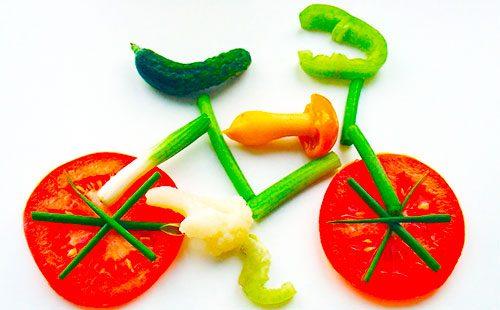
Varieties of diet
There are two main varieties of a low carbohydrate diet. They differ in the amount of carbohydrates that can be consumed per day.
- Non-ketogenic. The allowable volume is up to one hundred and fifty grams per day. But the concept of “good” and “bad” carbohydrates is introduced. The former are “long,” they are found in cereals, cereal products, vegetables, and some fruits. “Long” carbohydrates do not cause insulin bursts in the body, do not provoke feelings of hunger, but provide a long feeling of satiety and a sufficient supply of energy, including for active physical work. The second ones are fast, sugar and all its “derivatives” belong to them: confectionery, carbonated drinks, pastries, etc. The use of simple sugar causes a sharp release of insulin into the blood to break it down. In this case, excess unspent glucose is stored in the form of fat. The use of "bad" or fast carbohydrates is prohibited.
- Ketogenic. A carbohydrate volume of up to fifty grams per day is allowed. Ketogenic diets include Atkins, Ducan's nutrition systems at the initial stage. Their essence is to start the process of ketosis, in which fat masses are used by the body as an energy source. Fat burning provokes the formation of decay products - ketones. You can determine their presence by analysis of urine. Ketones are extremely aggressive elements that cause disturbances in the kidneys, have a carcinogenic effect.
Ketogenic food systems give the fastest results, they can quickly lose weight. But the release of ketones into the blood causes intoxication symptoms, which manifests itself in a deterioration in well-being, general weakness, the occurrence of nausea, and dizziness. You will have to endure these symptoms for fourteen to twenty-one days, until the body gets used to receiving energy from a new source.
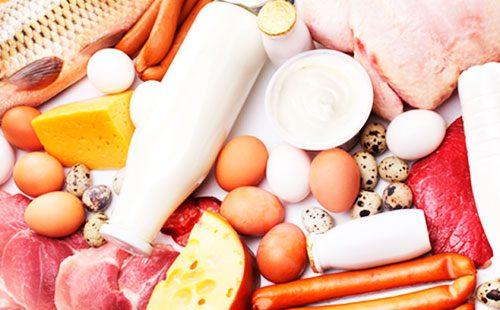
Products: Permitted and Prohibited
The basis of the menu for every day of a low-carb diet is protein products. A small amount of carbohydrates is allowed, depending on the type of food and the need to activate ketosis.
Foods you can eat:
- meat - beef, chicken, turkey, rabbit;
- offal - all species, including chicken egg, quail;
- seafood- all types of marine, ocean fish and other marine protein products without restrictions;
- dairy - kefir, cottage cheese, sour cream, dairy products;
- vegetables - non-starchy, in particular leafy, cabbage, all kinds of herbs, bell pepper, zucchini, green beans, onions;
- fruits, berries - acidic fruits, for example, citrus fruits, pomegranate, currants, strawberries, green apples;
- nuts - walnuts, almonds, cedar;
- grains- seeds pumpkins, sunflower, sesame seeds.
In a non-ketogenic diet, cereals with a high protein content are allowed. These are cereals:
- buckwheat with a protein content of 12% at a carbohydrate level of 68%;
- pea with a protein content of 22% at a carbohydrate level of 50%.
The list of carbohydrate-free foods does not indicate acceptable fat content when choosing them. It is important to consider that a sufficient fat content in the diet is necessary. They participate in metabolic processes, form the walls of nerve fibers, normalize cholesterol production. But the excessive content of fat in the diet provokes the formation of sclerotic plaques and blockage of blood vessels, thrombosis.
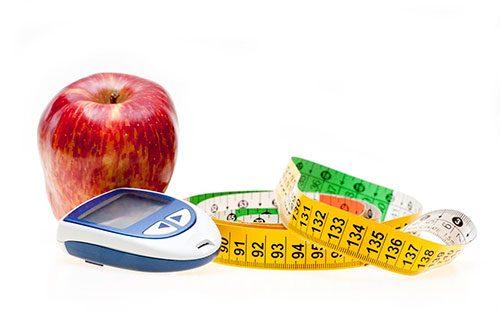
Foods that should not be eaten:
- sugar - in its pure form and contained in dishes (confectionery, sweet pastries);
- flour dishes - bread, all dishes from the dough;
- cereals - rice, pasta, cereal products (barleywheat barley, oatmeal) containing more than eighty percent of carbohydrates;
- starchy vegetables - beets, carrots, potatoes, garlic;
- sweet fruits and berries;
- whole milk;
- sweeteners - they do not contribute to weaning from sweet food, only increasing craving for it.
Alcohol is not prohibited in the low-carb diet foods table. It is allowed to drink vodka, brut, dry red wine, brandy, tequila and other sugar-free drinks. But it is important to consider that drinking alcohol stimulates the appetite and removes the prohibitions that you can observe in everyday life, but be sure to "dare" to the experiment by drinking a couple of glasses of alcoholic drink.
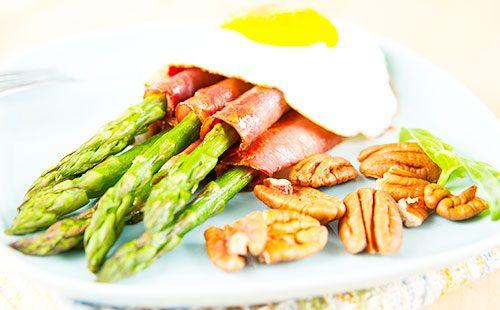
Menu for the week
In the table of allowed products there are a lot of tasty and healthy, so the menu does not seem limited. In fact, protein products prevail in it, and even allowed carbohydrates are allowed only in small quantities.
Table - Weekly menu option for a carbohydrate-free diet
| Day of the week | Eating | Food & Dishes |
|---|---|---|
| Monday | Breakfast | Half orange small |
| Lunch | 2 boiled eggs; coffee or green tea |
|
| Dinner | Leaf vegetable salad - 200 g; Boiled chicken fillet - 200 g |
|
| Lunch | Grapefruit; rosehip infusion |
|
| Dinner | Boiled fish fillet | |
| Tuesday | Breakfast | Half a small grapefruit |
| Lunch | Two egg omelet; green tea |
|
| Dinner | Leaf vegetable salad - 200 g; boiled turkey fillet - 200 g |
|
| Lunch | Orange; dried fruits compote |
|
| Dinner | Steamed Seafood | |
| Wednesday | Breakfast | Low-fat cottage cheese and bran casserole - 200 g |
| Lunch | 2 boiled eggs; coffee or green tea |
|
| Dinner | Beef steak - 200 g; stewed vegetables - 100 g |
|
| Lunch | Grapefruit; rosehip infusion |
|
| Dinner | Steamed marine fish fillet with aromatic herbs | |
| Thursday | Breakfast | Grapefruit |
| Lunch | Boiled beef - 100 g; a pillow of cabbage leaves; coffee or green tea |
|
| Dinner | Grilled fish - 200 g; leafy vegetable salad - 100 g | |
| Lunch | 2 tangerines; green tea |
|
| Dinner | Boiled seafood - 200 g | |
| Friday | Breakfast | Low-fat cottage cheese - 100 g |
| Lunch | Grilled fish fillet - 100 g; leafy vegetable salad - 100 g |
|
| Dinner | Baked chicken fillet; fresh vegetables with herbs - 200 g |
|
| Lunch | 2 tangerines; herbal tea |
|
| Dinner | Steamed fish fillet | |
| Saturday | Breakfast | Half grapefruit |
| Lunch | Fried eggs from two eggs; fresh tomato, greens; kefir - 200 ml |
|
| Dinner | Boiled rabbit fillet - 200 g; salad of green vegetables - 200 g | |
| Lunch | Orange; herbal tea |
|
| Dinner | Boiled seafood - 200 g | |
| Sunday | Breakfast | Hard cheese - 30 g |
| Lunch | 2 boiled eggs; coffee or green tea |
|
| Dinner | Soup with fish, white onion, herbs | |
| Lunch | 2 tangerines; herbal tea |
|
| Dinner | Boiled seafood - 200 g |
Compliance with the drinking regime is extremely important on a high-protein diet. Be sure to drink at least two liters of clean water. Fluids on ketogenic diets that stimulate ketosis are especially needed. The abundance of fluid reduces the negative effects of ketones on the body.

Compliance Advice
Reviews on a carbohydrate-free diet allow us to consider it an effective way to lose weight, subject to a number of requirements.
- Drink up to three liters of clean water per day. Start increasing the volume from a liter and a half a day to two and a half to three. Do not change the drinking regimen drastically, this can cause problems in the kidneys. For thirty minutes after eating, drinking is prohibited.
- Cook meat and fish without oil. Desirable cooking techniques - boiling in water and steam, baking in the oven. If you want a fried dish, add a few drops to the pan olive oil and rub it with a napkin to evenly distribute and remove excess fat.
- Eat small meals. Fractional nutrition is optimal for weight loss. When eating food often and in small portions, the body “understands” that there are no problems with food, food comes in regularly, you can spend all the energy received, rather than storing it. You can eat up to six times a day, including before bedtime, if you feel hungry. The last meal is the lightest, for example, a glass of low-fat kefir or one hundred grams of low-fat cottage cheese.
- Monitor the total amount of food. Despite the absence of restrictions on the amount of food consumed, it is important to observe moderation. The essence of any diet is to reduce the daily calorie intake. And if, limiting the use of sweets, actively replace it with steaks and sour cream, losing weight becomes impossible. The total amount of meat and fish consumed per day should be up to five hundred grams, divided into small portions. The volume of vegetable side dishes is up to three hundred grams. Instead of coffee with a diuretic effect, drink herbal tea, rosehip infusion, dried fruit compote in the morning and evening.
- Decide how long you plan to diet. According to doctors, a diet low in carbohydrates cannot be followed for a long time. For example, Dr. Ducan recommended a high-protein diet for three to five days, after which he allowed the introduction of a small amount of carbohydrates into the diet and a gradual increase in this volume. The duration of the diet is calculated individually, depending on how many kilograms you plan to lose.
- Go in for sports. Physical activity is necessary for weight loss. There is no need to exercise daily or try high-intensity workouts. Regular half-hour walking, morning exercises, light running - all these are options for affordable physical activity, which will be of great benefit compared to exhausting workouts.
Adjust the menu for a week of a low-carb diet, depending on the length of stay on it. Gradually increase the amount of carbohydrates, use recipes for dishes with a high content of vegetables, add cereals to the diet. Follow the dynamics of weight change. If the decline has stopped, you have reached the maximum point of carbohydrates in the menu.
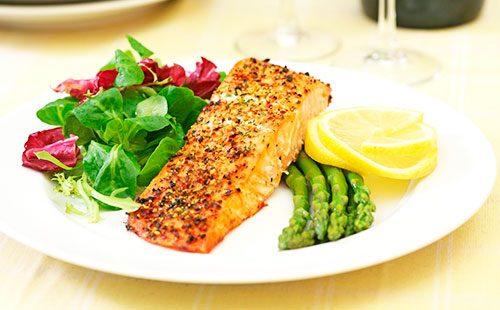
Reviews of experts on a carbohydrate-free diet
“Before you go on a low-carb diet, you need to understand exactly why you are doing this and how much,” says nutritionist Grigory Chernykh. “In this case, the risk of causing the body irreparable consequences is small.” What could be the consequences? According to the expert, there are several of them.
Negative consequences
A balanced diet means that the body needs to get enough protein, fat and carbohydrates from food. The norm of the latter for an adult is 350 grams per day. By changing proportions, we deliberately upset the "balance of power." This can lead to malfunctioning of the body.
- Less nutrients. “The diet considers cereals, fruits and vegetables exclusively as a source of carbohydrates,” continues Grigory Chernykh. “But these products are valuable suppliers of useful substances.” They bring microelements to the body, vitamins that simply cannot be found in meat, fish and eggs. ”
- Less fiber. Constipation and indigestion is one of the most common symptoms of “entering” a low-carb diet. When changing the diet, sources of fiber - fruits, vegetables and cereals - almost completely leave it, and the amount of protein food artificially increases. The body cannot cope with excess protein without enough coarse plant fibers. Protein masses are not removed from the intestine on time, rot in it, toxins are secreted. This is partly due to the deterioration in well-being that accompanies a person on such a diet. The beneficial microflora dies, which in the short term causes digestive problems, and in the long term - persistent disturbances in the gastrointestinal tract.
- Violation of tissue regeneration. According to those who have lost weight, in the first weeks of the diet, their health worsens. This is due to changes that occur in the body. The body does not receive glucose, but needs it to provide energy needs. At the same time, a lot of protein enters the body, which was previously used to regenerate the cells of all tissues without exception. The body has to replace carbohydrates with protein and use them as an energy source, in any case, until it learns to extract energy from its own fat reserves. Thus, protein is not spent on updating the cells of bones, muscles, skin, but on ensuring everyday energy costs.
Water loss, despite a plentiful drinking regime, is taking place at a catastrophic rate. Water escapes from the muscles where glycogen held it. Depletion of glycogen, which occurs on the first day of the diet, does not allow water to be stored in the tissues. Body volumes literally melt before our eyes. “Carbohydrates attract water, and proteins - dehydrate,” comments dietitian Julia Bastrigina. “Dehydration leads to a loss of tissue and muscle tone, sagging skin.”
But nothing happens with fat at this time. Its destruction begins around the third week, when the intensity of weight loss decreases markedly. The body can process no more than one hundred and fifty grams of adipose tissue per day. Therefore, weight loss within a kilogram per week is the norm for any carbohydrate-free nutrition plan, starting from the third week.

Glucose Deficiency Risks
“Remember once and for all. The only fuel for our body is glucose, ”continues nutritionist Julia Bastrigina. “If she is not there, the body will extract it from the muscles.”
At the same time, a lack of glucose provokes the development of other negative phenomena.
- Destruction of the glycogen “depot” of the liver. The body processes glycogen stores for eighteen hours. For the liver, the destruction of the depot is critically dangerous.The destruction of fats leads to the formation of compounds that "settle" in the liver and remain in it. It is incredibly difficult to withdraw them in the future; for this, drug therapy is necessary. But the preservation of fat residues is even more dangerous, since it leads to the development of fatty liver hepatosis and its irreversible consequence - type 2 diabetes.
- Violation of blood formation processes. Glucose is the only "food" that the brain consumes. Its main part is spent on supporting the process of blood formation. Glucose deficiency leads to a violation of normal blood formation. Long-term deficiency can cause anemia.
- The impossibility of mental work. In the absence of “food”, the brain cannot fully function. That is why low-carb diets are contraindicated for people engaged in mental activity.
- General weakness, high fatigue. Another symptom is that you are not getting enough carbohydrates from food. The body is corny lacking energy, so sports and active physical activity are impossible.

With diabetes
For diabetics, a low-carb diet seems to be the only true way to health and weight loss. After all, the products that supply glucose disappear from the diet, which requires insulin to break down. Its lack or complete absence in type 1 diabetes is not so terrible if there is nothing to split.
But there is danger in this judgment. Within three weeks, the body learns to work in a new way. In the absence of glucose sources, he begins to extract it from muscle mass, adipose tissue. That is, glucose in the body appears again. “In diabetes, a carbohydrate-free diet is strictly contraindicated,” says nutritionist Grigory Chernykh. “Sudden surges in glucose with its complete absence at the beginning of the diet and the sudden appearance in a few weeks can lead to critical health problems in such people.”
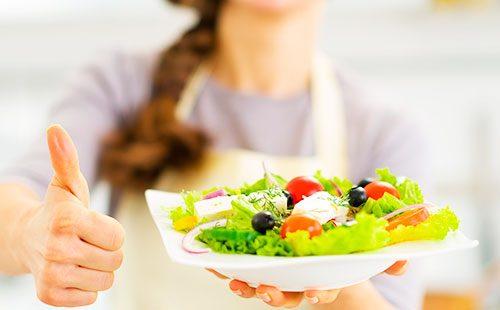
Risk minimization
“Do not think that you can sit on such food for a long time,” continues Grigory Chernykh. “From a physiological point of view, this is not justified and dangerous.” The nutritionist Kristina Lobanovskaya agrees with him. “After a month and a half of dieting, it is imperative to take a break. A sufficient amount of carbohydrates is extremely important for the body, and their constant lack leads to metabolic disorders, gastrointestinal tract functions, depression and other disorders of the nervous system. ”
In addition, Kristina Lobanovskaya draws attention to a side effect that the creators of such diets prefer not to talk about. “If you stick to a carbohydrate-free diet for too long, and then return to sweet, fried foods, even in minimal amounts, the body will begin to rapidly gain weight. At the same time, the second attempt to go on a carbohydrate-free diet will not bring results. ”
This is due to the loss of the ability to properly process carbohydrates. Our body “forgets” how to transform them into energy, and simply accumulates “in reserve”. “You can’t sit on a carbohydrate-free diet for too long,” notes Kristina Lobanovskaya. - And it is important to “get out” of it: eat fruit, cereals (buckwheat and oatmeal) twice a day. The body needs at least two weeks to replenish its carbohydrate supply. ”
Nutritionist Lyudmila Denisenko notes the main ways to reduce the harm of low-carb nutrition.
- Reduce carbohydrates gradually. You can not sharply exclude them from the diet. Reduce their volume in the diet by thirty to forty grams daily.
- Do not fall below 200 grams per day. This is a critical amount of carbohydrates, which is still sufficient for normal brain function and glycogen storage in muscles and liver. But at the same time, the body can lose weight.
- Eat foods with “good” carbohydrates. Your menu should not have sweet confectionery desserts and muffins, but you should not refuse from cereals for breakfast, whole grain breads and pasta from durum wheat. It is impossible to exclude vegetables and fruits from the diet.
- Reduce carbohydrates to a minimum of no more than three days. It is unacceptable to completely exclude carbohydrate products from the diet, and you can literally reduce it to a critical mark of eighty grams for a couple of days.
Even if you follow a diet that includes up to 200 grams of carbohydrates per day, regularly get yourself a “load”. Increase calorie content to 1600-2000 Kcal once a week.
“The most rational way is to limit simple carbohydrates, that is, sugar, in your diet and use“ slow ”carbohydrates in a dose,” comments dietitian Julia Bastrigina. - This is the optimal diet for a low-carb diet. If you rush to extremes and attribute most vegetables and cereals to high-carb foods, this will lead to health problems. ”
The menu of a carbohydrate-free diet in its standard form is not the right diet. It is extremely poor in vitamins, minerals, fiber and too rich in protein, which is unacceptable for our body. In the absence of a balance of basic nutrients, the probability of developing dangerous, negative consequences is high. It is important to approach the formation of the diet consciously and listen to your body. If it gives off alarms, discard a lean diet.
